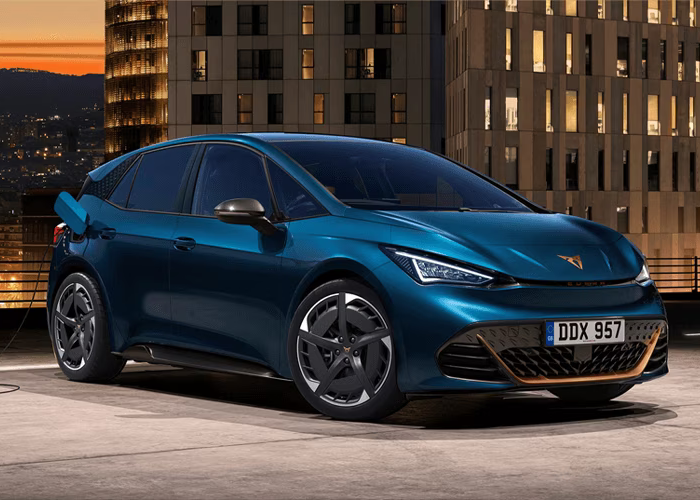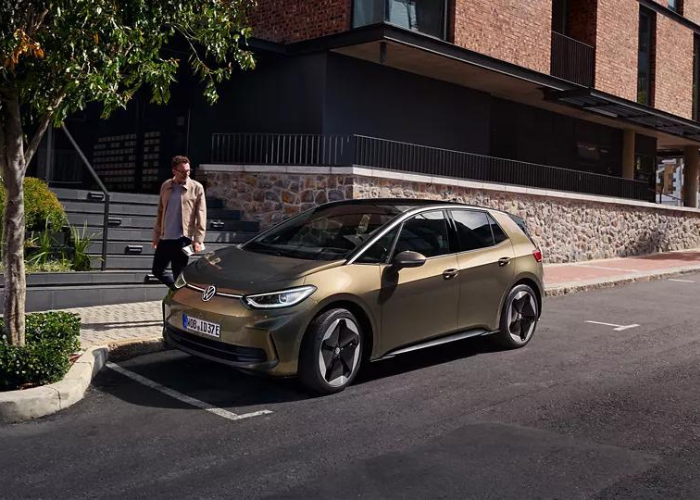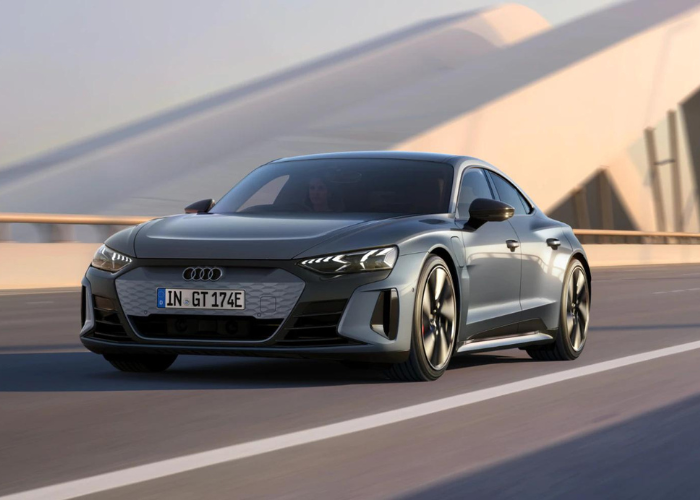The urgency to achieve sustainable transportation has never been more apparent. With the devastating effects of climate change becoming increasingly evident, a global shift towards eco-friendly transportation options is crucial. We've witnessed a dramatic surge in electric vehicle (EV) sales in recent years, indicating a promising trend toward greener transportation.
As the demand for electric vehicles continues to rise, so does the competition among car manufacturers. This increased competitiveness has led to a surge in demand for electric components and innovative technology, pushing automakers to develop more efficient and sustainable solutions.
In this article, we'll delve into the world of electric vehicles and explore the practices of leading EV manufacturers, including Cupra, Audi, Polestar, Volkswagen and Tesla, as they shape the future of sustainable transportation.
.png)
Cupra: Embracing Sustainability with Innovative Materials
Cupra, a renowned Spanish automotive brand, is making significant strides in the EV market by combining high-performance vehicles with a solid commitment to sustainability. Embracing a forward-thinking approach, Cupra is experimenting with natural elements that aren't conventionally used in the automotive industry, leading to the reinterpretation of traditional materials and the creation of sustainable alternatives for their vehicles.
One example is their use of Dinamica, a sustainable microfiber material that replaces conventional leather in vehicle interiors. Made from recycled polyester fibers in clothing and PET bottles, Dinamica offers luxury and comfort while minimizing environmental impact.
Additionally, Cupra incorporates SEAQUAL, a unique fabric from upcycled marine plastic waste, into their seat upholstery. This innovative material reduces waste and raises awareness about the importance of recycling and environmental preservation.
Cupra's dedication to sustainability and its creative use of eco-friendly materials set a high standard for the automotive industry. Their efforts demonstrate that creating stylish, high-performance vehicles is possible without compromising environmental responsibility.

Volkswagen: Creativity and Innovation in Sustainable Vehicle Production
Volkswagen, known for its commitment to a greener future, showcases creativity and innovation in sustainable vehicle production. Seat covers made from plastic bottles, car parts fashioned from rice husks, and fillers produced in sugar refineries are just a few examples of Volkswagen's eco-friendly approach.
By leveraging unconventional materials and cutting-edge solutions, Volkswagen is actively reducing its environmental impact and contributing to a cleaner, more sustainable automotive industry. This inventive approach to vehicle production exemplifies the company's dedication to fostering a greener tomorrow.

Audi: Embracing Circular Economy in the Automotive Value Chain
Audi is a pioneer in the automotive industry when it comes to sustainability. The company is focused on integrating circular economy principles across the entire automotive value chain, from product design and purchasing to production, marketing, and reuse.

What is the circular economy?
The circular economy is an alternative to the traditional linear economy, which is based on the "take, make, and dispose" model. In a circular economy, products are designed to be reused, recycled, or composted at the end of their life, rather than being thrown away.
How is Audi implementing the circular economy?
Audi is taking a number of steps to implement the circular economy, including:
The circular economy has a number of benefits, including:
Polestar: Pioneering Sustainability in Electric Vehicle Production
Polestar, Volvo's electric brand, is committed to using more sustainable materials in future models, including recycled plastic, natural materials, and eco-friendly fabrics. By embracing these sustainable materials, Polestar aims to reduce the environmental impact of its vehicles, conserve natural resources, and improve air quality.
The company's focus on sustainability extends to reducing waste and enhancing efficiency in its production processes. This involves developing innovative methods to recycle materials from end-of-life vehicles and minimizing energy consumption during production.
The company's focus on sustainability extends to reducing waste and enhancing efficiency in its production processes. This involves developing innovative methods to recycle materials from end-of-life vehicles and minimizing energy consumption during production.
You can also check our detailed review of the Polestar 2, Polestar's leading electric vehicle. In that review, we discuss in detail the environmental practices that Polestar has implemented.
.png)
Tesla: Leading the Charge in Environmental Impact and Sustainability
Tesla is a leading electric vehicle manufacturer that is committed to sustainability. The company's mission is to accelerate the world's transition to sustainable energy, and it is doing this by producing electric vehicles, battery storage, and renewable energy generation systems.
Tesla's electric cars are designed to minimize their carbon footprint. In fact, since 2008, Tesla vehicles have saved over 3.5 million tons of CO2 emissions. The company's factories also prioritize sustainability. For example, the Gigafactory in Nevada is powered by 100% renewable energy, and the Gigafactory in Shanghai utilizes solar arrays and other green solutions.
In addition to producing eco-friendly vehicles, Tesla is also focused on energy generation and storage solutions. The company's solar products, such as Solar Roof and Solar Panels, aim to reduce the reliance on fossil fuels for electricity generation. Tesla's Powerwall, Powerpack, and Megapack, energy storage solutions, enable the storage of renewable energy, further promoting the adoption of sustainable energy sources.
Tesla is a leading example of how businesses can reduce their environmental impact and contribute to a cleaner, healthier planet. By investing in sustainable practices, Tesla is helping to shape the future of transportation and energy.




_1675179241.png)
